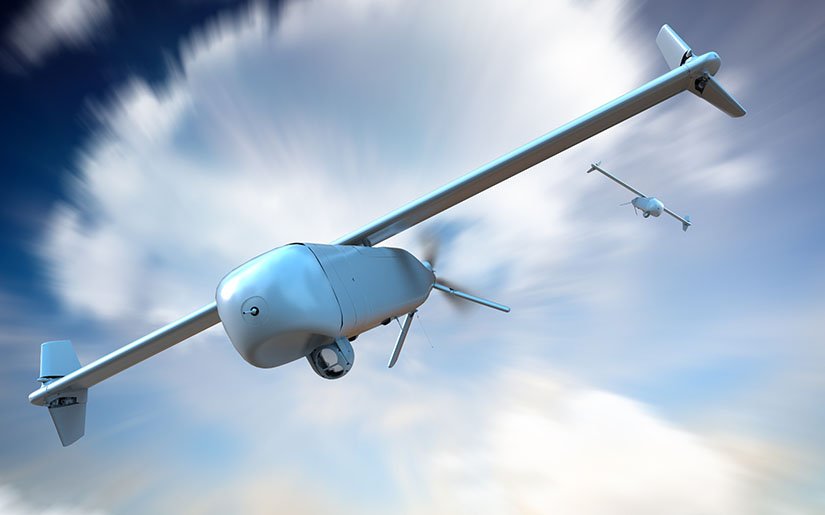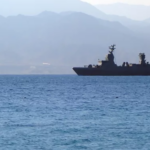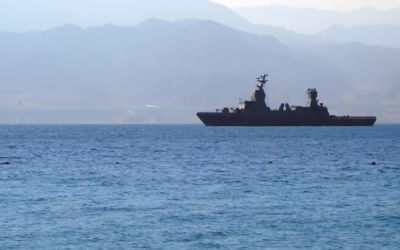OPINIONS
OPINIONS
Athanasios Tsakalos*

In recent years, the gradual development of Lethal Autonomous Weapon Systems (LAWSs) in the theater of operations has increased dramatically.
LAWSs are considered autonomous weapon systems not only capable of scanning an area of interest, detecting and identifying hostile targets, but also deciding independently – or not – to lock in on the threat and attack it for a quick, lethal closure. These capabilities are products of, among other things, advanced algorithms developed and enhanced by artificial intelligence (AI) technologies.
Also read: Autonomous drones mark a new warfare era – UN says they have been used in Libya – VIDEO
Israel Aerospace Industries’ (IAI) Mini-Harpy multi-purpose tactical munition belongs to this category and the purpose of this article is to present its main features and technical characteristics.
Mini-Harpy Design – Mission
The Mini-Harpy combines the capabilities of two IAI loitering munitions, the Harop and the Harpy, and is designed to provide unrelentingly up-to-date situational awareness and close the attack circle at a low cost.
Further, it seeks to neutralize radiation-emitting threats, such as radars, and to suppress/destroy enemy air defence systems (SEAD / DEAD missions) by launching attacks from shallow to vertical angles. Furthermore, the mini-Harpy can be used for attacks against armored and non-armored vehicles as well as against personnel.
Fire and Forget as well as Human-in-the-Loop function
The Mini-Harpy can be classified as either “Fire-and-forget” or “Launch-and-leave” munition, definitions that refer to munitions that do not require further human intervention as soon as they are launched. In other words, in such cases, the enemy target does not need to be “identified” by a laser or “colored” by aircraft radar.
Specifically, intelligence about target engagement is entered into the munition shortly before the launch phase. The intelligence can come from coordinate systems and radar estimates to an image of the target point. In this sense, it can be said that the Mini-Harpy is a reactive system that seeks “if-then situations”, where the system reacts according to a given sensory input.
However, the Mini-Harpy can operate in Human-in-the-Loop mode as an option, where the munition can engage targets and attack only on human command. In practice, the system is designed to allow operators to control until the last minute, thus providing options for canceling and / or repeating the mission. In any case, according to the manufacturer, this weapon system has as its principle of operation the engagement of targets, making collateral losses and losses of friendly forces unlikely.
Main Parts
Primarily, the Mini-Harpy consists of five main parts:
- a) A combat platform (land- or sea-based) loaded with the relevant sealed canisters for launching
- b) Dual electro-optical / infrared and anti-radiation seeker
- c) C4ISR systems [(Command, Control, Communications, Computers (C4) Intelligence, Surveillance and Reconnaissance (ISR)]
- d) One operator and
- e) Algorithms for weapon-system management
Mini-Harpy specifications
- Munition Weight: 40 kg
- Duration of Operation: Up to 2 hours
- Explosive Warhead: Up to 8 kg
- Operational Range: Up to 100 kilometers
- Typical Operational Altitude: 1000-5000 feet (300-1500 meters)
- Loitering Speed: 55-58 knots / Max Speed: 200 knots
- Battle Damage Assessment (BDA)
- Mission Execution under adverse weather conditions
Perhaps the most important features of this weapon system are its reduced radar signature, its silent due-to-electrical-propulsion operation, and its ability to barrage massively at enemy targets makes it particularly deadly in saturation attacks, as evidenced by the recent Nagorno-Karabakh conflict, in which Azerbaijan used unmanned aircraft and loitering munitions, including the Harop as you can see in the video below.
The modern field of operations in Greece and Cyprus
The acquisition of loitering munitions by the Hellenic armed forces and/or of the National Guard of the Republic of Cyprus should be considered tacit at some point in the future since the systems at issue combined with other weapon systems such as Unmanned Aerial Vehicles (UAVs) have radically and irreversibly changed modern warfare.
The rapid development as well as the existence of various options in the field of these systems makes them ideal for use in the operational theaters of Greece and Cyprus, with the latter being one of the densest operational theaters in the world.
Also read: Armenia – Azerbaijan | Extensive use of UAVs and the first military use of S-300 – VIDEO
* International Relations Analyst
** The views and/or comments expressed in the articles belong to each author and may not constitute an opinion and/or position and/or be adopted as is by the company and/or the site administrators. More in the terms of use of the website.
NEWSLETTER SUBSCRIPTION
A reluctant alliance? A different approach to French – Serbian defence relations
It has only been a few months since Croatia started receiving the first of the Rafale fighter jets it ordered from France.
The role of SERIOUS GAMES in the development of skills on Defense Standards
In an increasingly complex world, one vital factor for any successful organization is continuous capability building.
Strategy for Building Up Interoperable Defence Capabilities
Based on the current and emerging security threats and challenges in the geostrategic landscape, there is a…
Lebanon | The arms monopoly must be returned to the state, says Mikati
Prime Minister Najib Mikati told the Paris conference on Lebanon that the arms monopoly must be returned to the Lebanese state and army…
Russia | Ratification of the strategic partnership treaty with North Korea
The treaty for the overall strategic partnership with North Korea was voted unanimously by the Russian parliamentarians.
Iran – Saudi Arabia | They are planning the first joint military exercises in the Red Sea
Tehran and Riyadh plan to hold joint military exercises in the Red Sea, according to the Times of Israel. The two traditional Middle…
USA – Republic of Cyprus | Today the first strategic dialogue
The first Strategic Dialogue between the Republic of Cyprus and the USA is taking place today, Wednesday, October 23, 2024, in Nicosia.
Poland – Russia | Diplomatic crisis – Russian consulate in Poznań closes
Polish Foreign Minister Radoslav Sikorski accused Russia of hybrid warfare and acts of sabotage and announced…
Green light from the EU for the 35 billion euro loan to Ukraine
The European Parliament today gave the “green light” to the €35 billion macro-financial assistance loan to Ukraine, which will…




















